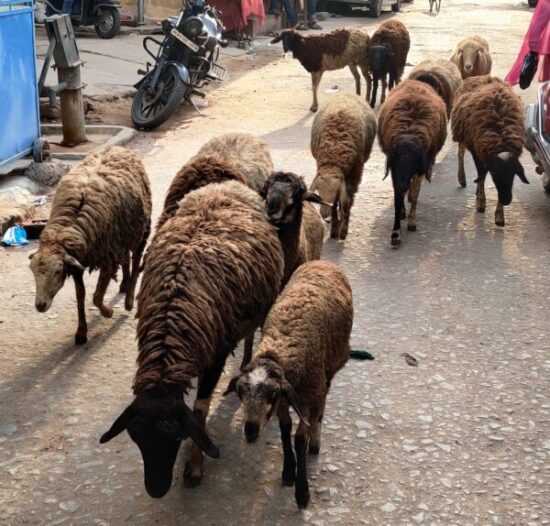Humans have a complex relationship with animals and use them for a variety of purposes. There are working animals, companion animals, animals used for scientific research, and animals used for food and by-products.
The relationship with animals extends back to the earliest humans. History tells those early human beings obtained their food basically from animals and then from plants. Over time, they developed effective tools to catch and process the animals into different items. As human beings developed skill, they started domesticating animals by raising herbivores they could use for labour, milk and meet.
Early farmers kept the animals in herds and bred them, providing farmers with a continuous supply of animals. Later, when humans realized they could use animals for greater purposes they started rearing bigger herbivores and employed them in agriculture and transport. In the meantime, some animals like dogs, cats, and some birds became parts of human’s daily lives as pets.
Over time the farming practices evolved to mechanization and machines took the places of animals in agriculture. Applications of poisonous pesticides misbalanced agricultural ecosystems and many animals like sparrows, pigeons, crows, frogs, peacocks, etc. started reducing in their number due to poisoning.
In spite of developments, men continued their practice of hunting wild animals and clearing forests, their habitats. Thus, the number of wild animals continued falling and many wild species of animals and birds became extinct.
The replacement of farm animals by tools and machines, applications of agrochemicals, destruction of habitats, hunting and killing of animals for various purposes- all led to a crisis in biodiversity which further added to the problems of environment already severe due to industrialization and urbanization.
Today, we need to become sensitive towards our attitudes to animals. Watching documentaries and visiting zoos is not enough in this respect. Conscious efforts for the preservation and conservation, and prevention of poaching can build substantial relation between man and animals.
Animal Products
Animal products are materials derived from the bodies of animals. Flesh, fat, milk, blood, eggs are some animal products.
Animal products can be divided into Food- products and Non- food Products. Some food products from animals are meat which includes fish; poultry and game; eggs; dairy products such as milk, yogurt, cheese and whey; Honey; blood sausage, bone meal etc.
Non- food products from animals include –Animal fibre; ambergris, beeswax, blood and blood substitutes, casein, castoreum, coral rock, ejaculate which is used in the artificial insemination, feathers, fur, gallstones for Traditional Chinese medicine, horn which includes antlers, ivory and tusks; leather, manure, mink oil, pearl, scales, musk, silk, sponges, urine, wool, veterinary anti-venom etc.
Communities dependent on animals: Cruelty and Hunting
Man has been keeping animals and depending on them for his livelihood since the origin of civilization. Watermen have been depending on donkeys since long for carrying clothes. Gaderia community in India has traditionally been rearing sheep to earn their livelihood. Circus owners still keep many types of animals as performers and earn money through their shows.
Madaries keep monkeys, snakes, bears etc to train them show skills among the public and to earn money. Thus, a number of human communities depend on animals for their livelihood while they keep those animals under very hard conditions. Farmers in different parts of India domesticate bulls, buffaloes, horses, cows etc for different agriculture purposes.
In most of the cases it has been seen that communities depending on animals don’t care them properly. In turn they feed them less and load extra burden of work on them most often beyond their capacities.
With increasing awareness about animal ethics, animal rights, and needs of animal welfare different governments have framed laws to protect animals and to offer them comfortable lives.
In India, the Prevention of Cruelty to animals Act was enacted in 1960 to prevent infliction of unnecessary pain or suffering on animals and to amend the laws relating to the prevention of cruelty to animals. The Animal Welfare Board of India was formed for the promotion of Animal Welfare.
A number of Non- government Organizations are working for the cause of animals across the world and Greenpeace, PETA (People for Ethical Treatment for Animals), and People for Animals are some of these organizations.
Hunting is the practice of killing or trapping any living organism, or pursuing it with the intent of doing so. Hunting wild animals or feral animal is most commonly done by humans for food, recreation, or trade. In present-day use, lawful hunting is distinguished from poaching, which is the killing, trapping or capture of the hunted species contrary to applicable law.
The species that are hunted are referred to as game and are usually mammals and migratory or non- migratory birds. Some tribal communities in India have hunting traditions and it is often difficult for governments to put restrictions on traditional hunting.
Wild animals like tigers, panthers, Chirus (the Tibetan Antelopes) are hunted on large scales for commercial purposes. However, hunting in India has been banned by law so as to put legal restrictions on the practice to safeguard biodiversity.
Hunting in India is strictly prohibited under Wildlife (Protection) Act, 1972.It provides a powerful legal framework for -Prohibition of hunting, Protection and management of wildlife habitats, Establishment of protected areas, Regulation and control of trade in parts and products derived from wildlife, and Management of zoos.




